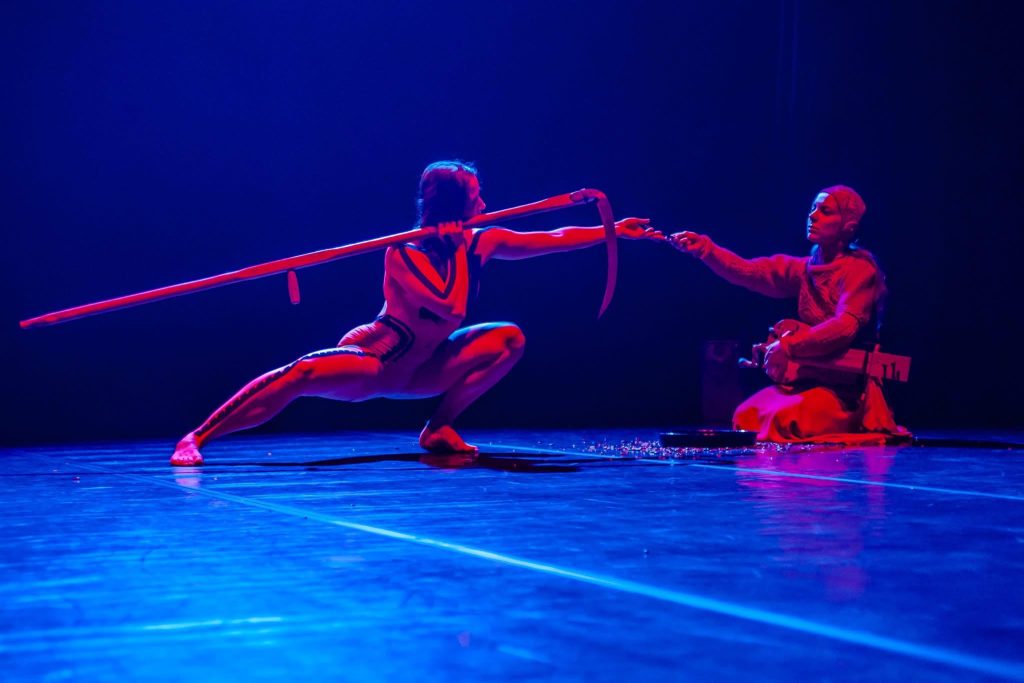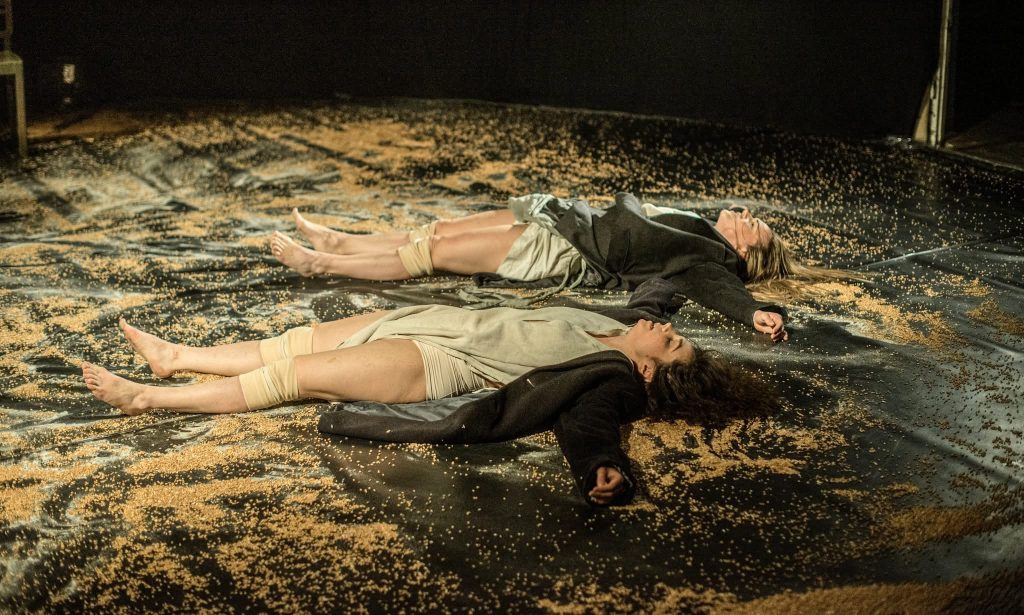
Inta Balode
It was a very nice evening. I met two young ladies, aged 8 and 6. Let’s call them Maria and Anna. They were making the first gingerbread of the year and thinking about the upcoming Christmas time.
A bit of silence but clearly felt appreciation is in the air.
The conversation brought back memories about two dance performances I saw in Riga on September 25th. “Traces” and “Dance Macabre” were presented to Latvian audiences within the events of the Ukrainian Dance Platform, as part of the project “Let the Body Speak: Rebuilding the Community”, initiated by the Ukrainian Contemporary Dance Platform.
Both performances are female duets and both are working with traditional Ukrainian symbols, experimenting with ways in which they can merge with contemporary dance. Both works were created after the full-scale invasion. The dedication of both artists and organizers is a strong reminder about the need to keep delivering messages, no matter what happens. And do that through the language you know best. Performances maintain conversation and convey messages about national identity, through traditional symbols and their meaning in a contemporary context.
In both works, there are two women on stage. Women can travel abroad during the war, so they can deliver the message. When men are at war, women are busier than ever. In a time of war, women keep the spirits up, they support and nurture. When the war is over, they will be the ones that won’t have time to be devastated. They will heal the wounds, they will plant the flowers and make gingerbread. As they always do.
“Danse Macabre. The Immortal Dance” by director and scenographer Bohdan Polishchuk, combines dancing, singing and the live sound of a lyre. The work is visually intense due to its powerful elements: contrasting costumes – the red knitted dress of the composer and musician Varvara Turta, and the body of the choreographer and performer Oleksandra Mahera, taped with black lines; a metal bowl with beans; and a scythe. The proposed topic of the interdependence of life and death is clearly stated symbolically. In Latvian folklore and presumably also in Ukrainian, a scythe is the tool that accompanies the figure of death, and magic beans have the power to grow up into the sky. And they don’t freeze there. The performance penetrates me through the movement, sounds (scary scratch of metal to metal, the various voices of the lyre and singing) and imagination. A human body with black tape as its only protection, dancing with a scythe, causes kinesthetic reactions of fear, insecurity and the omnipresence of danger. Even if there are moments of closeness and support among the performers, there is also an intense loneliness, an inward focus. In this set up, I interpret it as a protective tool at times when death is more influential than life. No time for sorrow, do what you can to support life. Long mourning is the luxury of peaceful times.

Even if the performance “Traces” is aesthetically different there are several similarities – a sense of “no time for despair”; linen costumes, wheat grains and a bird shaped clay whistle refer to the Ukrainian national identity. Both works are in dialogue with the voices of ancestors. Choreographer Tetiana Znamerovska in the synopsis refers to Jung’s ideas about the collective unconsciousness and how past psychological traumas keep chasing present humans.
“Traces” start with Kateryna Pogorielova sitting and playing clay whistle, while Tetiana Znamerovska marks the space of memories and future hopes, by spilling grains. She is not sowing, she is spilling or perhaps feeding somebody who is gone and lives only in the voices of the birds. However, this slow sorrow and memory state is not what the work is about. The performance unfolds as a very strong physical dance where two skillful and emotionally expressive performers share their power, anger and seconds of care, before the struggle continues. Two black chairs are the dance partners they love, hate and dance with a bit like “Rosas danst Rosas”. Due to the dynamic and speedy movement there is a certain aggression in the relationship between the dancers, but once again, like “Danse Macabre”, it is not personal. Even if in the “Traces” we see living people, not symbols, nevertheless they stand for something much more than their own lives. The culmination of the dance of despair and guilt is a solo by Tetiana where Kateryna and later Tetiana herself spills white powder on her body (one might think that it’s flour but due to the choreography I read them as ashes). When the struggle with the heritage of the nations’ unconsciousness comes to an end, the performers find peace and acceptance lying on the ground, covered with flour and grains, smiling and looking up to the sky where God lives.

It was a very nice day. I met my neighbor, let’s call him Rudolph. He is a farmer and I went to his barn to pick up 40 kilos of grain for the performance of “Traces”. He said he had chosen the bigger and more good looking grains once he knew that they would be driving two hours to perform in Riga. The grains had a good show in Riga and later they went to do another show in Tallinn. And who knows perhaps after that they might have turned into gingerbread dough and today another two young ladies are discussing what would happen if everybody in the world would demand no war for Christmas.
An insight into the performances in Riga by Latvian Television
Featured image: “Danse Macabre. The Immortal Dance”, photo: Valeria Landar